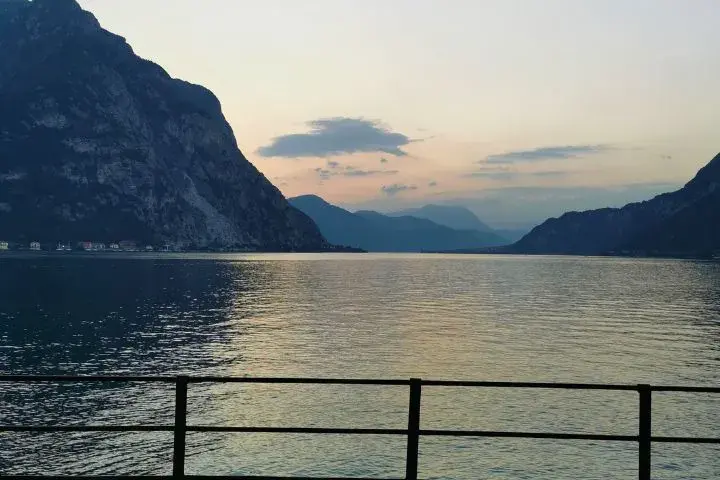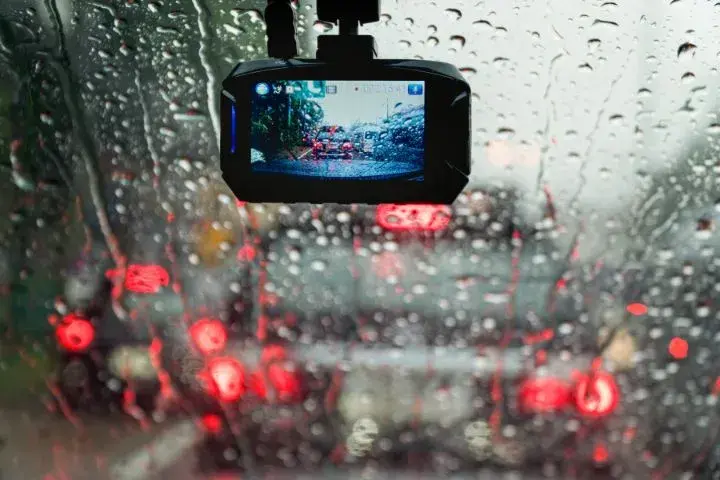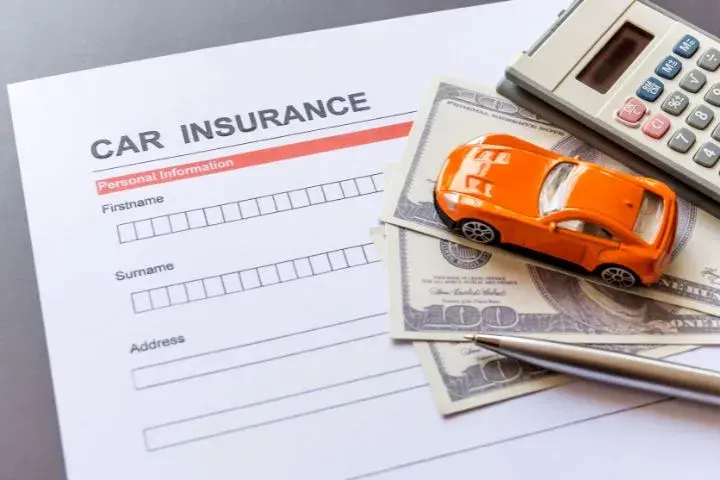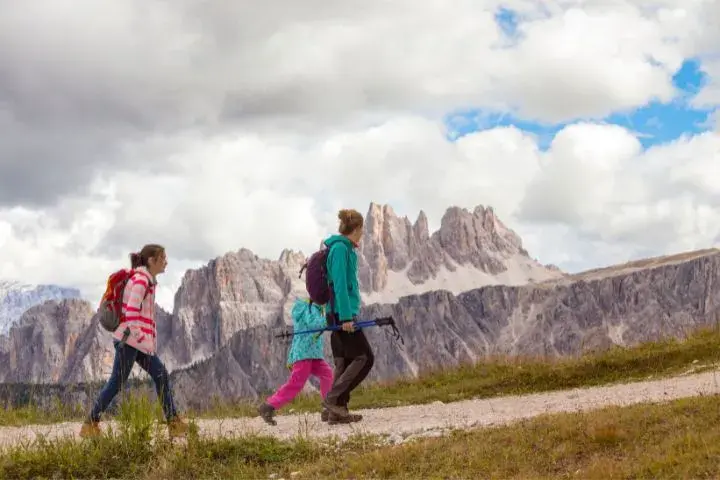Best Times to Road Trip Europe: Ultimate 2025 Guide

by Assia A. | Last Updated April 17, 2025

Are you planning a European road trip but not sure when to go? Timing can make or break your adventure! Europe’s diverse landscapes transform dramatically with the seasons, creating entirely different experiences depending on when you visit.
Did you know that tourist numbers in popular destinations like the Amalfi Coast can increase 300% during peak summer?
Whether you dream of cruising along Mediterranean coastal roads or exploring charming Christmas markets, we will help you identify the perfect season for your European road trip. Let’s dive into the best times to road trip Europe!
Best Seasons for a European Road Trip
Let me tell you that picking the right season for your European road trip can make or break your entire experience! After doing this journey six times now (yep, slightly obsessed), I’ve learned that each season offers something totally unique.
- Spring is honestly my sweet spot – especially late April through May. The Mediterranean coast is warming up nicely without the insane summer crowds, and you’ll catch those gorgeous wildflowers blooming across Tuscany. We scored hotels at nearly 40% off summer rates!
- Summer delivers those picture-perfect days, but man, the traffic along the Amalfi Coast in July? Absolute nightmare. It took us 3 hours to drive, which should’ve been 45 minutes. But the Alpine passes are finally open, and driving through Switzerland with those snow-capped peaks against blue skies is worth every penny.

- Fall might be Europe’s best-kept road trip secret. The crowds thin out by mid-September, but the weather stays decent until November in southern regions.
- Winter requires more planning (and snow tires in many countries!), but Christmas market routes through Germany and Austria are magical experiences you just can’t replicate any other time.
Spring Road Tripping in Europe (March- May)
Spring in Europe is, hands down, my favorite time to hit the road! After a long winter, everything just comes alive, and you’re not fighting summer crowds yet. We stumbled onto this secret back in 2018 when we had to reschedule a summer trip, and I’m so glad we did!
The weather can be a bit touch-and-go in March, not gonna lie. We got caught in a surprise downpour driving through northern Italy last year. Always pack layers! By April though, things really settle down, especially in southern Spain where temperatures hover around a perfect 70°F.

The Keukenhof tulip routes in the Netherlands are absolutely worth planning your timing around – peak bloom is usually in mid-April, and driving between those color-explosion fields is something you can’t explain until you’ve seen it. We saved over €200 on our hotel compared to July prices!
Easter weekend gets crazy busy in Catholic countries, so avoid Rome that weekend unless you’re specifically there for celebrations. Trust me on this one. We made that mistake and spent more time sitting in traffic than sightseeing.
Provence in May? Absolute magic before the summer tourists flood in. The early lavender starts blooming, restaurants that were closed for winter reopen, and you can actually find parking in those cute little hilltop towns without having a meltdown.
Summer European Road Trips (June-August)
Summer road trips in Europe? Absolute bucket list stuff! We did the Amalfi Coast drive last July and yeah, it was packed, but those views with the bright blue Mediterranean? Worth every minute stuck behind tour buses!
Nothing beats summer for mountain pass driving. The Grossglockner in Austria and Stelvio Pass in Italy are finally snow-free, and driving those hairpin turns with clear visibility is something I’ll never forget. Book accommodations at least 3 months ahead though – we learned this the hard way and ended up paying double for a last-minute hotel in Cortina.

Heading north is actually super smart in the summer. We drove through Sweden during late June and it was mind-blowing driving at midnight with the sky still light! Barely needed headlights until after 11pm, which meant more hours exploring those gorgeous coastal roads.
Watch out for the heat in southern Europe! Our car’s AC couldn’t keep up in Greece, and we had to adjust our driving to mornings and evenings. Keep extra water in the car and maybe skip those inland routes in Spain during peak afternoon heat – the temperature hit 104°F when we were there last August!
The festival season makes summer unique, too. We accidentally timed our Provence drive with a lavender festival in Valensole, and it turned a regular driving day into one of our favorite memories from the entire trip.
Fall Road Trip Magic in Europe (September-November)
Fall road-tripping through Europe is honestly where it’s at! After years of summer travels, we switched to September last year, and I’m kicking myself for not doing it sooner. The crowds thin out dramatically after the first week of September, but the weather stays gorgeous through October in most regions.
Wine regions during harvest? Pure magic! We drove through Burgundy in late September and randomly got invited to help pick grapes at a small family vineyard. You just don’t get those authentic experiences in August when everyone’s too busy with the tourist crowds.
The roads through Chianti were practically empty compared to summer, and we snagged reservations at restaurants that had been booked solid just weeks before.

The fall colors in Bavaria and Austria are just ridiculous – like driving through a postcard. We hit the Alpine roads around mid-October, and the combination of snow-dusted peaks with golden valleys below was worth every penny. Didn’t even need hotel reservations most nights!
Weather can get unpredictable by November, especially in higher elevations. We got caught in an early snowstorm in the Dolomites and had to change our route last minute. Lesson learned – always check mountain pass conditions and maybe skip the really high routes after mid-October unless your car’s properly equipped.
Gas prices tend to drop a bit after summer peak too – we saved nearly 15% on our fuel costs compared to our previous summer trip. Who doesn’t love that?
Winter Road-Trip in Europe (December- February)
Winter road trips in Europe are seriously underrated! We went last December instead of our usual summer trip, and I’m completely hooked on the magic of those snow-dusted landscapes. Driving through Bavaria with every little village lit up with Christmas lights was like being inside a holiday movie!
Ya gotta be prepared though – winter driving is no joke in many parts of Europe. We rented a car with winter tires in Austria (it’s actually required by law there), and it saved us when we hit that unexpected ice patch near Innsbruck. Most rental companies charge extra for winter tires but trust me, it’s worth every euro.

Switzerland in January was mind-blowing. Those winding mountain roads through pristine white landscapes with barely another car in sight? Perfection! Just stick to the main routes that are regularly plowed. We tried a “shortcut” through a minor pass and ended up backtracking an hour when we found it closed for the season.
Avoid mountain passes in the Pyrenees and most of the Balkans during winter unless you’ve got serious winter driving experience. We learned this from locals after almost getting stuck on a route from Spain to France. The northern coastal routes through Denmark and Germany are relatively clear, making winter driving more manageable.
The budget benefits are enormous! We saved almost 40% on accommodations compared to summer prices, and most tourist sites were blissfully empty. Our hotel in Vienna upgraded us for free simply because they had better rooms available – it would never happen in July!
Planning Your European Road Trip by Country
Northern Europe threw me some real curveballs on my first visit! Timing is everything in Scandinavia – we went in June for those crazy-long daylight hours, and it was mind-blowing driving at 11 PM with a bright sky.
The flip side? Winter drives in Norway mean minimal daylight (like 4-5 hours in December), but the trade-off is seeing the Northern Lights from your car window!
UK and Ireland are doable year-round, but February was surprisingly good – fewer tourists and the Gulf Stream keeps temperatures milder than you’d expect.
- Central Europe hits its sweet spot in late May through June or September. We accidentally booked our Germany trip during Oktoberfest once, and hotel prices in Bavaria nearly doubled!
- Switzerland’s mountain passes (like Furka and Grimsel) typically don’t open until late May or even June, depending on snow levels. We checked too late and had to completely reroute our April trip last year.
- For Mediterranean countries, avoid August at all costs unless you enjoy traffic jams and sweating buckets! We learned this the hard way in southern Italy. The locals literally abandon cities like Rome and head to the coast, making beach roads absolutely packed. Late May or early October hits that perfect balance in Croatia – warm enough to swim but with half the summer crowds and prices.
- Eastern Europe has this fantastic sweet spot in late September. The summer crowds have left Prague and Budapest, but the weather stays pleasant enough for comfortable driving. Poland in winter can be challenging outside major highways – we got stuck for hours after a snowstorm outside Krakow because the smaller roads weren’t plowed.
- The Balkans require careful timing. We tried Montenegro in November and found many coastal restaurants already closed for the season. But prices were about 60% lower than summer, and the scenery was still stunning! Just know that some mountain routes between countries may close with little warning after October due to weather conditions.
Practical Planning Considerations
Shoulder seasons are where it’s at, folks! We’ve done Europe in May and late September for our last three trips, and it’s like discovering a secret hack.
- Hotels in the Amalfi Coast were nearly 45% cheaper in early May compared to July, but the weather was still fantastic! The sweet spot is that 3-4 week window just before or after peak season when everything’s open, but the crazy crowds haven’t arrived or have just left.
- Rental cars get shockingly expensive in summer – we paid almost double for the same car class in August versus October last year. Book at least 3 months ahead for summer rentals, especially if you need automatic transmission (they’re much less common in Europe).
We once waited until 6 weeks before our July trip and ended up with the only car left: a massive van that was terrible on those narrow Italian roads! - Border crossings are generally smooth within the Schengen Zone, but we got caught in a 2-hour line between Croatia and Slovenia during the August rush.
In winter, some smaller border crossings in mountainous areas can close entirely – our GPS didn’t know this and sent us to a closed crossing between Austria and Italy in January. - Ferry schedules change dramatically by season! The ferry we wanted from Spain to Italy runs daily in summer but only twice weekly in October. We had to restructure our whole itinerary when we discovered this too late. And many smaller island routes shut down completely between November and March.
- Mountain passes are the biggest planning consideration. The famous Grossglockner in Austria is usually closed until mid-May, and we showed up in early May only to find it still snow-covered. Always check official websites for opening dates rather than assuming based on general seasonal information.
- Travel insurance gets overlooked, but winter driving adds real risks. Our basic policy wouldn’t cover delays due to snowstorms, so we upgraded before our December trip through the Alps. That extra €50 saved us when we had to book an unexpected hotel after a pass closed due to avalanche risk.
Conclusion
Timing truly is everything when planning a European road trip! While summer offers the most reliable weather and longest days, don’t overlook the magic of shoulder seasons when crowds thin out and prices drop. Consider your priorities—whether it’s perfect weather, budget savings, or specific seasonal experiences—and plan accordingly.
Remember that Europe’s diverse climates mean you can find ideal road trip conditions somewhere on the continent during any month. Now grab your map, pick your perfect season, and start planning that unforgettable European road trip adventure for 2025!













